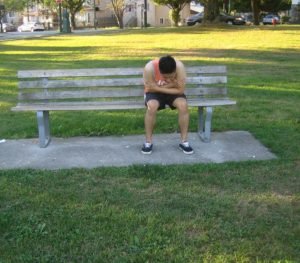Always bear in mind that strokes occur as a result of disrupted blood supply to the brain either due to a ruptured blood vessel or blockage of a vessel. There are two types of stroke that you should be familiar with – ischemic (blockage of a blood vessel that supplies the brain) and hemorrhagic (bleeding in or around the brain). When it comes to a sensory stroke, it simply refers to one of the various syndromes suffered after a stroke which results to constant tingling, numbness or undesirable sensations on one or both sides of the body.
Lacunar infarction
A lacunar infection involves blockage of a small artery which results to tissue death in a deep structure situated beneath the brain cortex. The thalamus which is a region of the brain positioned in the deeper regions receives blood via a unique set of arteries. Cases of lacunar stroke occurs in a different way from other forms of stroke since these arteries are smaller in size and more prone than those of the exterior brain regions.
If there is damage to the deeper brain regions, it can result to sensory changes experienced in stroke. A sensory stroke from a lacunar infarction includes symptoms of facial paralysis, eye paralysis or abrupt numbness. Lacunar infarction can lead to significant disability, but the prevalence of the occurrence is less than that of an ischemic stroke.

Cerebral hemorrhage
A hemorrhagic-related stroke can occur from the weakened vessels around the brain which causes the blood to gather at the area and leads to the death of the brain tissues. Take note that a cerebral hemorrhage can lead to a rare occurrence of a pure sensory stroke.
In a study conducted, it was discovered that individuals have sensory deficits linked to bleeding in focused areas of the brain. The sensory impairment involving distortions of touch and skin sensations was assessed via MRI which were due to hemorrhage in the pontine and thalamic brain areas.
Dejerine Roussy syndrome
In some cases of individuals who experienced stroke, the Dejerine Roussy syndrome can occur. This condition can lead to various sensory anomalies including burning or freezing sensations and disruption with temperature discernment. The condition is not present in all stroke survivors, however it is discovered in one study that constant damage to the thalamus of the brain is a possible culprit. The perceptual distortion of pain is the main sensory symptom evident in this syndrome and the treatment involves stimulation of the pain receptors.
What are the additional factors?
The risk for a sensory stroke increases if the individual has unhealthy lifestyle habits such as excessive use of alcohol and smoking. Individuals who have poor eating habits such as those with a diet rich in cholesterol can also increase the risk for having a stroke. The buildup of plaque can lead to the blockage of the arterial blood flow. This is also a factor in the development of aneurysms in the brain. A ruptured aneurysm can occur in the deeper regions of the brain linked with sensory functions.
